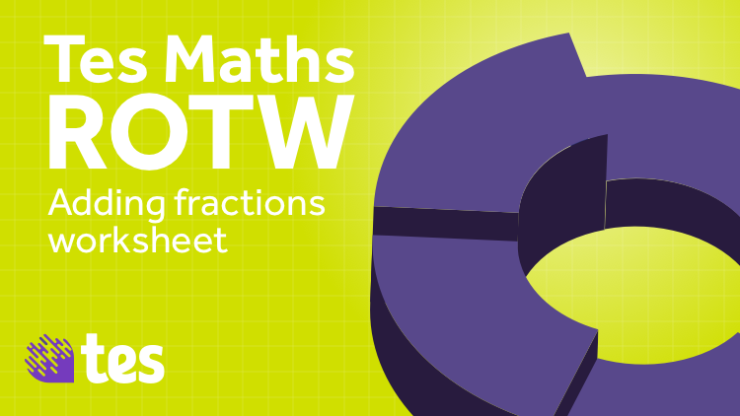To see all of the work I do for TES Maths, including Resource of the Week, Inspect the Spec, Pedagogy Place, Maths Newsletters and Topic Collections, please visit the TES Maths Blog here
What is it?
Now, if you are on the lookout for an exciting title for a resource, “Adding Fractions worksheet” might not exactly fit the bill. But bear with me a second, for this is a wonderful resource that I think teaches us all a very important lesson.
For me, there is little doubt that students need a lot of practice of core mathematical skills. Whether you talk in the language of long-term memory, automation, or the motivating feeling of success, such practice is needed, and take time – there is no shortcut to expertise. But this leaves us with the issue of the nature of this practice, for if students are presented with reams and reams of disconnected questions, then boredom sets in, effort levels go down, hard thinking steps, and benefits to learning grid to a halt.
That is why I really like this resource. On the face of it, it is just a load of questions on adding fraction. No fancy context, or anything like that. But when you look closely at the progression of difficulty throughout the questions, the quality of the resource comes shining through. Sometimes students are asked to complete the addition in the usual way, sometimes they are given the answer and asked to fill in a gap in the question, and sometimes there is more than one correct answer!
How can it be used?
It goes without saying that this resource works well at the point where you want students to practice adding fractions. Because of the nature of the questions, the chances are it will generate a lot of discussion between students, This should be encouraged. I like the structure of silence for, say, 5 minutes, and then a period of 3 minute discussion with the person next to you. This discussion may then make its way to the front of the class if there is a key learning point or misconception that needs addressing – indeed, the instances of questions that have several possible correct answers make absolutely ideal points of discussion. Finally, back to silent working again so students have chance to go at their own pace.
Any routine set of practice questions can be transformed this way, and I truly believe that students will be better off for it.
Thanks so much for sharing
Craig Barton
Download: Adding fractions worksheet
View the author’s other resources
